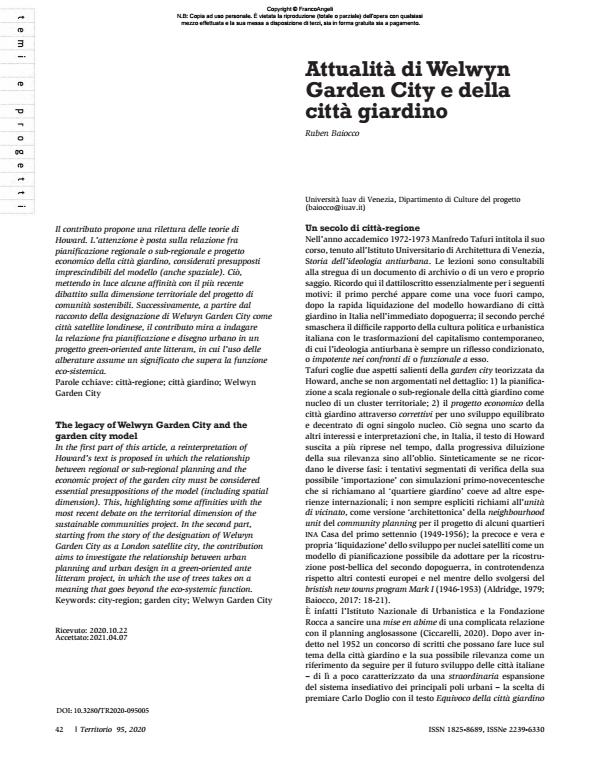The legacy of Welwyn Garden City and the garden city model
Journal title TERRITORIO
Author/s Ruben Baiocco
Publishing Year 2021 Issue 2020/95
Language Italian Pages 11 P. 42-52 File size 1160 KB
DOI 10.3280/TR2020-095005
DOI is like a bar code for intellectual property: to have more infomation
click here
Below, you can see the article first page
If you want to buy this article in PDF format, you can do it, following the instructions to buy download credits

FrancoAngeli is member of Publishers International Linking Association, Inc (PILA), a not-for-profit association which run the CrossRef service enabling links to and from online scholarly content.
In the first part of this article, a reinterpretation of Howard’s text is proposed in which the relationship between regional or sub-regional planning and the economic project of the garden city must be considered essential presuppositions of the model (including spatial dimension). This, highlighting some affinities with the most recent debate on the territorial dimension of the sustainable communities project. In the second part, starting from the story of the designation of Welwyn Garden City as a London satellite city, the contribution aims to investigate the relationship between urban planning and urban design in a green-oriented ante litteram project, in which the use of trees takes on a meaning that goes beyond the eco-systemic function.
Keywords: City-region; garden city; Welwyn Garden City
Ruben Baiocco, Attualità di Welwyn Garden City e della città giardino in "TERRITORIO" 95/2020, pp 42-52, DOI: 10.3280/TR2020-095005